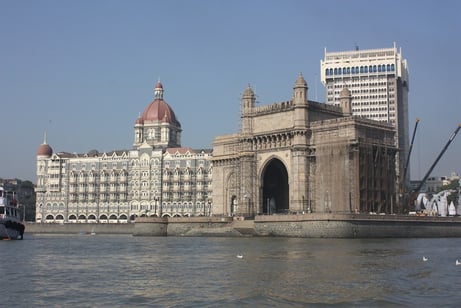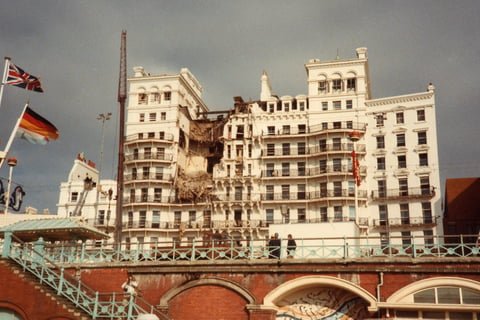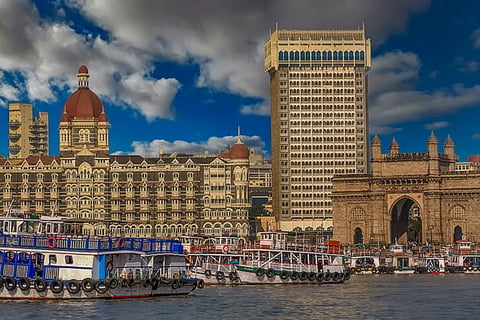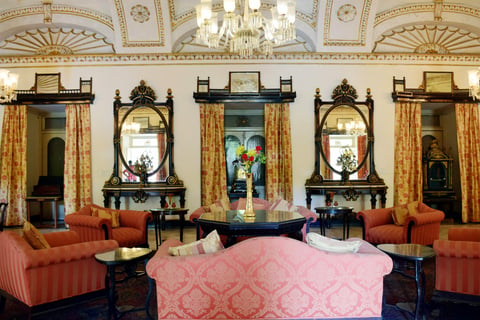Taj Mahal Palace Hotel: Luxury in Mumbai
CULTUREENGLISH
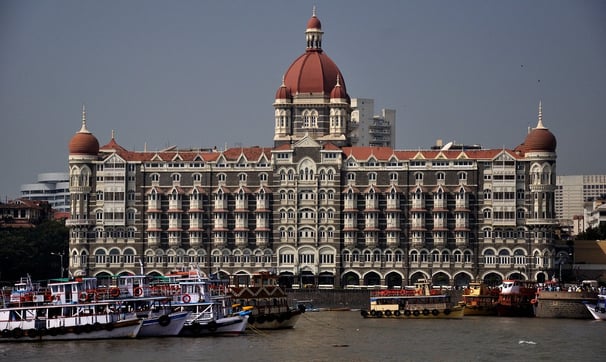

The Taj Mahal Palace Hotel in Mumbai, often referred to simply as the "Taj Mumbai," is an iconic luxury hotel with a rich history that intertwines with the legacy of India.
The Taj Mahal Palace Hotel in Mumbai, often referred to simply as the "Taj Mumbai," is an iconic luxury hotel with a rich history that intertwines with the legacy of India. Located on the waterfront, adjacent to the Gateway of India, the Taj has become a symbol of luxury, resilience, and cultural heritage in the country. Here’s a complete exploration of its history, from its establishment to its current-day significance.
---
1. The Origins and Establishment of the Taj Mahal Palace Hotel
The history of the Taj Mahal Palace Hotel begins with Jamsetji Tata, an industrialist and the founder of the Tata Group. The idea to build the Taj is said to have been born from Tata’s dream to create a grand hotel that would rival the luxury hotels in Europe, providing world-class hospitality in India.
- Inspiration and Vision: Tata’s vision went beyond simply establishing a hotel; he wanted to create an institution that would reflect India’s potential for greatness and sophistication.
- Construction Begins: Construction on the Taj began in 1898, designed by British architects with influences from various architectural styles. It blended elements of Saracenic Revival with European and Islamic styles, using materials sourced from around the world.
---
2. The Grand Opening: A New Era for Indian Hospitality (1903)
The Taj Mahal Palace opened its doors in December 1903, featuring 565 rooms, a unique fusion of Indian, Oriental, and European design, and a host of luxurious amenities.
- Luxurious Facilities: The hotel introduced many firsts to India, including electricity, American fans, German elevators, and English butlers. It became an instant sensation among the elite, both local and international.
- A Hub for Prominent Guests: Soon, the hotel became a preferred choice for global dignitaries, leaders, and celebrities, including Mahatma Gandhi, Queen Elizabeth II, The Beatles, and John Lennon.
---
3. Surviving Wars and Political Changes (World War I and II)
During both World Wars, the hotel played a unique role:
- World War I: The Taj Mahal Palace was converted into a hospital for British soldiers during the war.
- World War II: The hotel continued to serve as a symbol of luxury and resilience, maintaining operations despite the challenges posed by the war.
Even as India went through political upheavals and eventual independence in 1947, the Taj remained an emblem of tradition and grandeur.
---
4. The Rise of the Taj Group and Expansion (1970s–1990s)
In the 1970s, the Tata Group began expanding the Taj brand into new territories, with the Taj Mahal Palace Hotel as the flagship property.
- National Expansion: The brand expanded across India, opening properties in Delhi, Goa, Rajasthan, and Kerala.
- International Expansion: The Taj Group also established properties internationally, expanding the brand’s global footprint.
- Preservation Efforts: In the late 1990s, the Taj underwent a major renovation to restore its heritage and update amenities, ensuring it could compete in the modern luxury market.
---
5. The 2008 Terrorist Attacks: A Tragic Chapter
On November 26, 2008, the Taj Mahal Palace Hotel was one of the primary targets during the Mumbai terrorist attacks. For three days, the hotel endured attacks by gunmen, causing severe damage to its historic structure and the tragic loss of many lives.
- Impact on the Hotel and Staff Heroism: The attacks led to extensive damage and the loss of 31 lives within the hotel, including staff and guests. The courage displayed by the hotel staff during this period became legendary, as they risked their lives to protect guests.
- Global Solidarity and Restoration Efforts: In the aftermath, the Taj Mahal Palace underwent a massive restoration effort, reopening its doors with full grandeur in August 2010 as a testament to resilience.
---
6. Post-2008: A Symbol of Resilience and Global Prestige
After the restoration, the Taj continued to strengthen its image and brand worldwide:
- Revival and Upgrades: The hotel introduced modern amenities while maintaining its heritage features. The architecture and design remained faithful to its original style, symbolizing endurance.
- Awards and Accolades: Today, the Taj Mahal Palace is globally recognized for its luxurious hospitality and has received numerous accolades, including being listed among the best hotels worldwide.
- Cultural Significance: The Taj is also a landmark for significant cultural events, elite gatherings, and as a setting in films and media. It has maintained its position as an essential part of Mumbai’s landscape and history.
---
7. Current-Day Operations and Sustainability
Today, the Taj Mahal Palace Hotel operates under the umbrella of Indian Hotels Company Limited (IHCL), which is part of the Tata Group. With over 550 rooms, a range of fine-dining restaurants, and luxury suites, it continues to attract guests from around the world.
- Sustainability Efforts: The hotel has embraced eco-friendly initiatives, reducing energy consumption, water usage, and waste generation, making efforts to preserve the environment while offering luxury.
- Maintaining Heritage and Innovation: Through continual renovation, training, and service excellence, the hotel balances preserving its legacy while meeting modern luxury standards.
---
8. Conclusion: The Taj Mahal Palace as a Symbol of Legacy and Excellence
The Taj Mahal Palace Hotel stands as an extraordinary example of resilience, heritage, and luxury. From its origins in the visionary dreams of Jamsetji Tata to its role as a global symbol of India’s spirit, the hotel continues to evolve, honoring its past while embracing the future.
The Taj Mahal Palace isn’t just a hotel—it’s a living piece of history, embodying the essence of India’s hospitality and strength.
